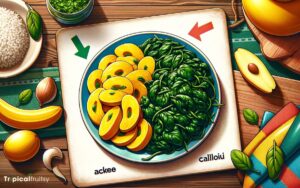What Is Ackee and Saltfish? Discovering Caribbean Cuisine!
Ackee and saltfish is a traditional Jamaican dish renowned for its rich history and distinctive flavor.
The meal centers around ackee, a fruit native to West Africa that was brought to the Caribbean. This fruit, when cooked, bears a resemblance to scrambled eggs both in texture and appearance.
Saltfish, or salt-cured cod, complements the ackee and is a testament to the island’s historical reliance on preserved foods. While ackee is celebrated for its taste, it must be prepared with care due to its natural toxicity when unripe.
Together, these ingredients are sautéed with onions, peppers, and spices to create a savory, hearty meal.
Ackee and saltfish is not only a staple of Jamaican cuisine but also holds cultural significance, often served as a breakfast dish but enjoyed at any time of day.
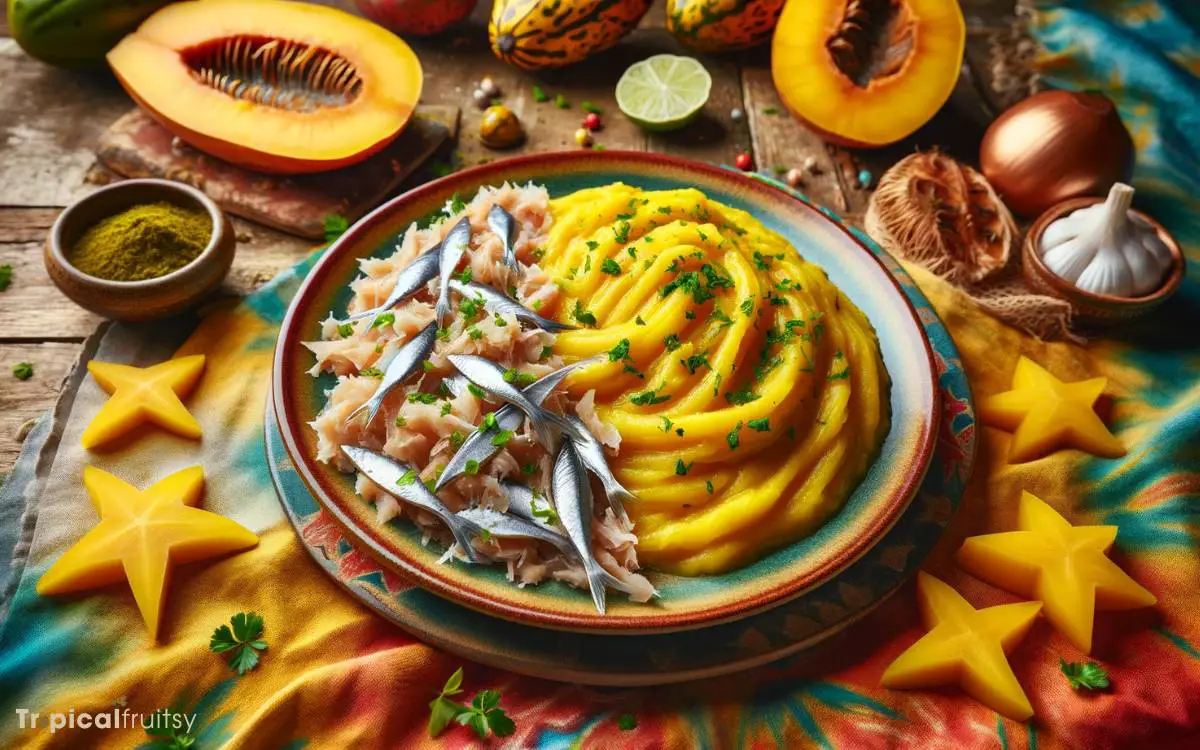
Key Takeaway
Safe preparation methods include selecting ripe ackee, removing the seeds and pink membrane, and boiling the fruit for at least 30 minutes.
The Origins of Ackee
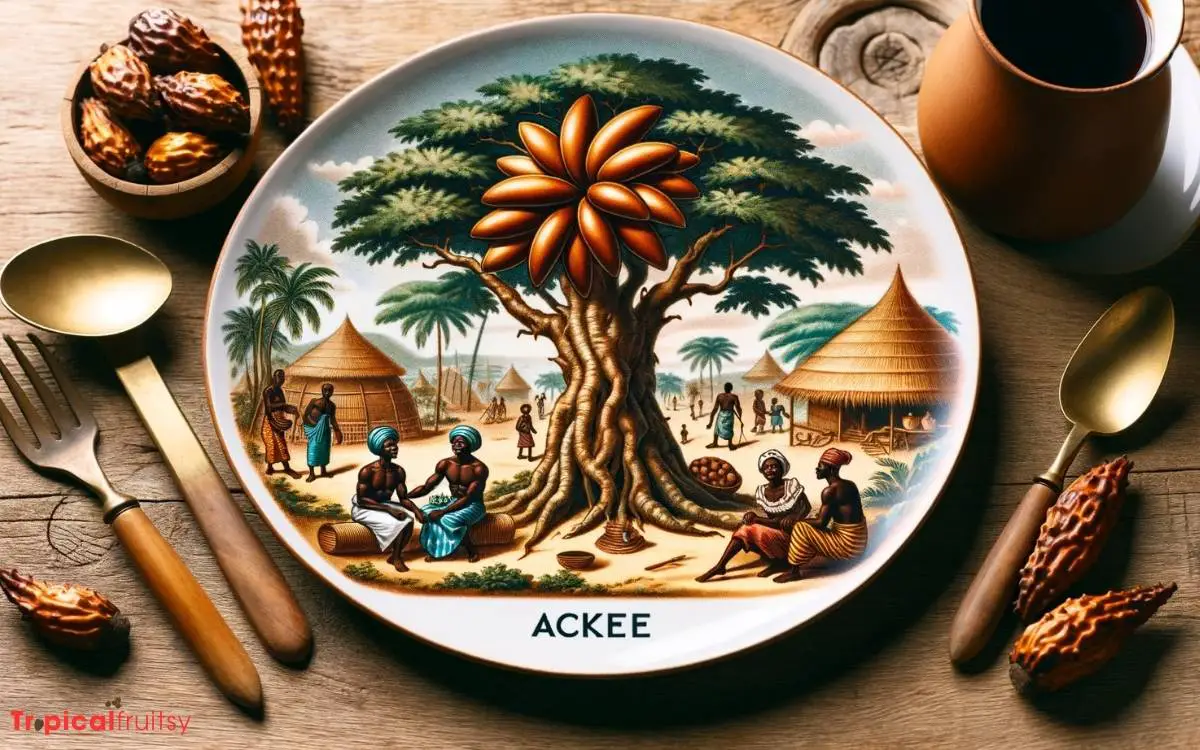
Ackee, the national fruit of Jamaica, is a West African native that was transported to the Caribbean in the 18th century. Its introduction to Jamaica is often attributed to Captain William Bligh, who brought the fruit from West Africa in 1793.
Scientifically known as Blighia sapida, the ackee tree is a part of the Sapindaceae family, which also includes the lychee and the longan.
The fruit’s peculiar biology necessitates caution: only the fleshy arils are edible, as other parts contain the toxins hypoglycin A and B.
Ackee’s adoption into Caribbean cuisine mirrors complex historical and cultural exchanges among continents. Its culinary significance, particularly when paired with saltfish, is steeped in a colonial past where imported, preserved fish became a staple diet.
This culinary marriage presents a compelling entree to the exploration of saltfish through history.
Saltfish Through History
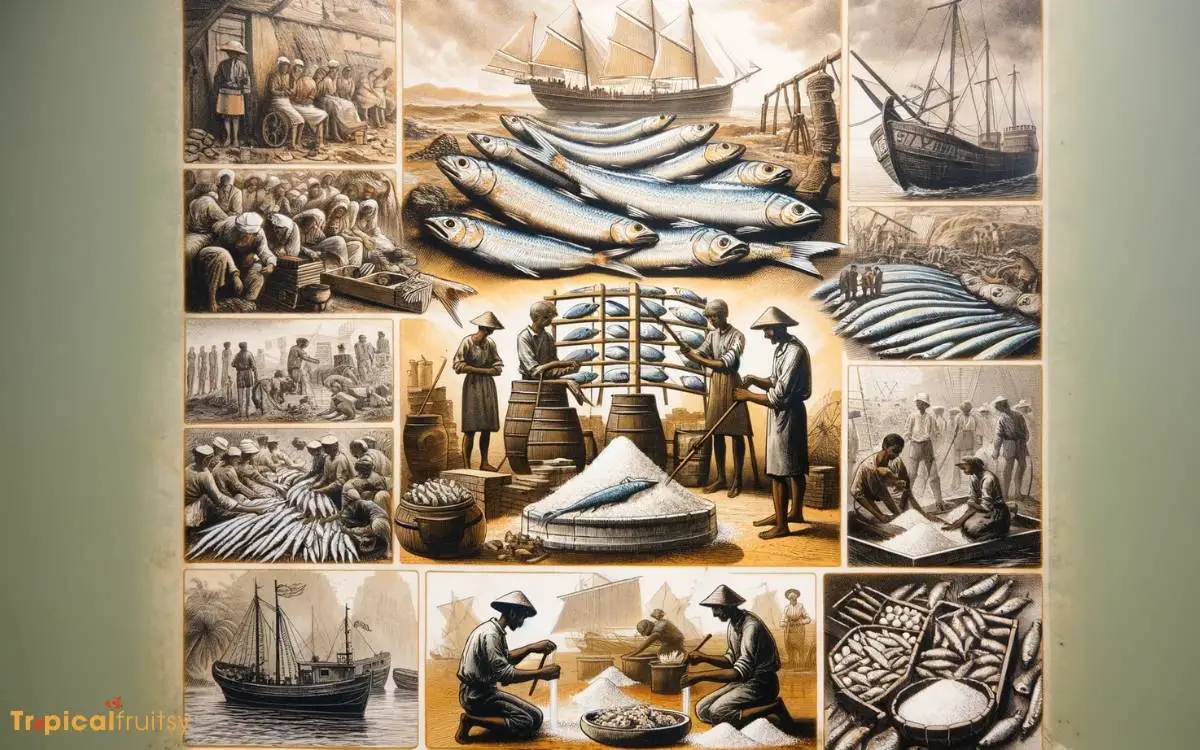
The salted, dried cod commonly known as saltfish has played a pivotal role in international trade and nourishment since as early as the 16th century, complementing the culinary landscape into which ackee was later integrated.
Intriguingly, the preservation of fish through salting emerged not merely as a means to extend shelf life but also facilitated the nourishment of seafaring populations during the age of exploration and colonization.
This method of preservation allowed for the storability and transportability of protein resources across vast distances, thereby influencing dietary patterns across continents.
Saltfish’s historical significance is underscored by its economic and sociocultural impacts, which have resonated through the centuries.
Understanding Ackee’s Toxicity
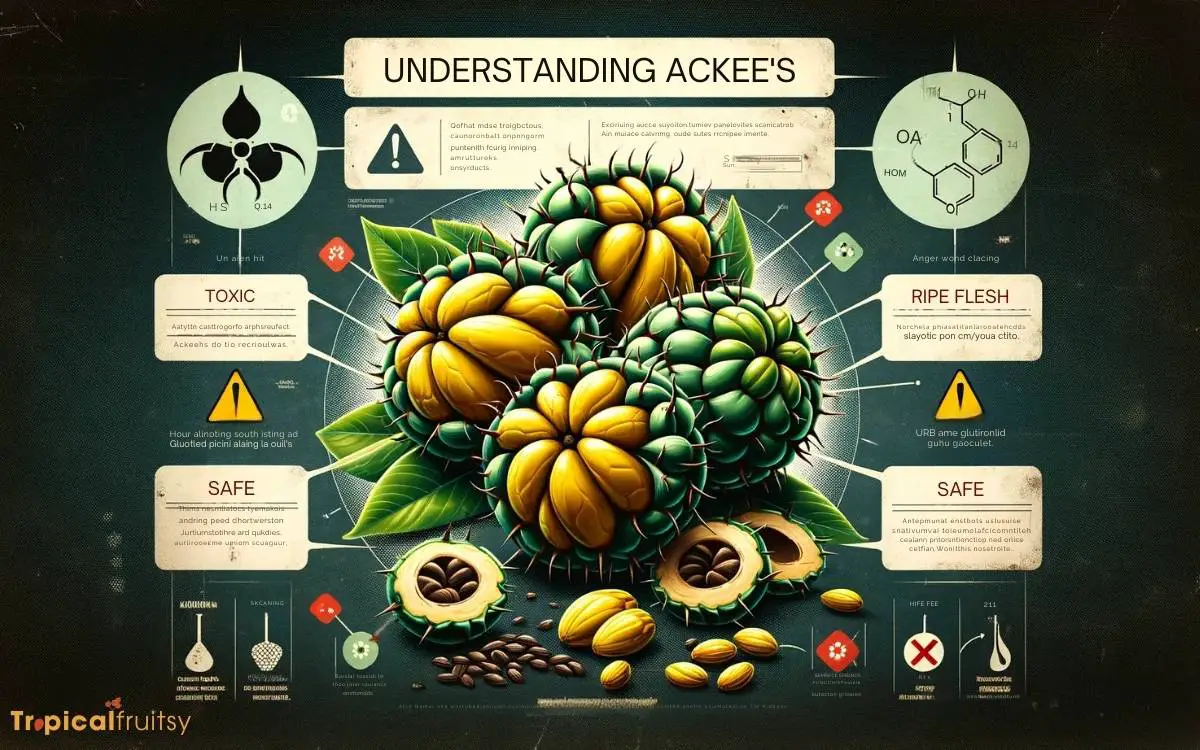
Ackee, the national fruit of Jamaica, harbors inherent risks when consumed unripe, due to the presence of toxic compounds such as hypoglycin A.
Recognizing the significance of proper culinary processing, it is imperative to examine safe preparation methodologies to mitigate the potential health hazards.
This analysis will explore the fundamental protocols to ensure ackee is consumed safely, aligning with both culinary traditions and food safety standards.
Unripe Ackee Dangers
While ackee is celebrated as a culinary delight when ripe, consuming the fruit before it has fully matured can lead to severe toxicity due to the presence of hypoglycin A.
This naturally occurring amino acid derivative is found in high concentrations within the unripe ackee arils and can induce hypoglycemia by inhibiting the body’s ability to release glucose from the liver, leading to a condition known as Jamaican Vomiting Sickness.
The seriousness of this malady necessitates an in-depth understanding of ackee’s ripening stages.
It is only when the fruit’s protective pods turn red and naturally open that the levels of hypoglycin A decrease to non-toxic levels, rendering the fruit safe for consumption.
Acknowledging these risks is critical to mitigating potential health hazards associated with this traditional dish.
Safe Preparation Methods
Understanding how to safely prepare ackee is crucial, as proper handling and cooking are imperative to neutralize its potential toxicity. Ackee contains hypoglycin A, a toxin which, if ingested, can lead to Jamaican Vomiting Sickness.
To mitigate this risk, the following steps should be adhered to:
Selection:
- Choose ackee that has naturally opened on the tree; closed ackees are not ripe and contain higher levels of toxins.
- Discard any ackees with signs of mold or unusual discoloration.
Preparation:
- Remove the seeds and the pink membrane, as these parts contain the highest concentration of hypoglycin A.
- Boil the ackee fruit for at least 30 minutes to further reduce toxin levels.
This analytical approach ensures safety and maximizes flavor, providing a segue to the subsequent section on ‘essential ingredients explained’.
Essential Ingredients Explained
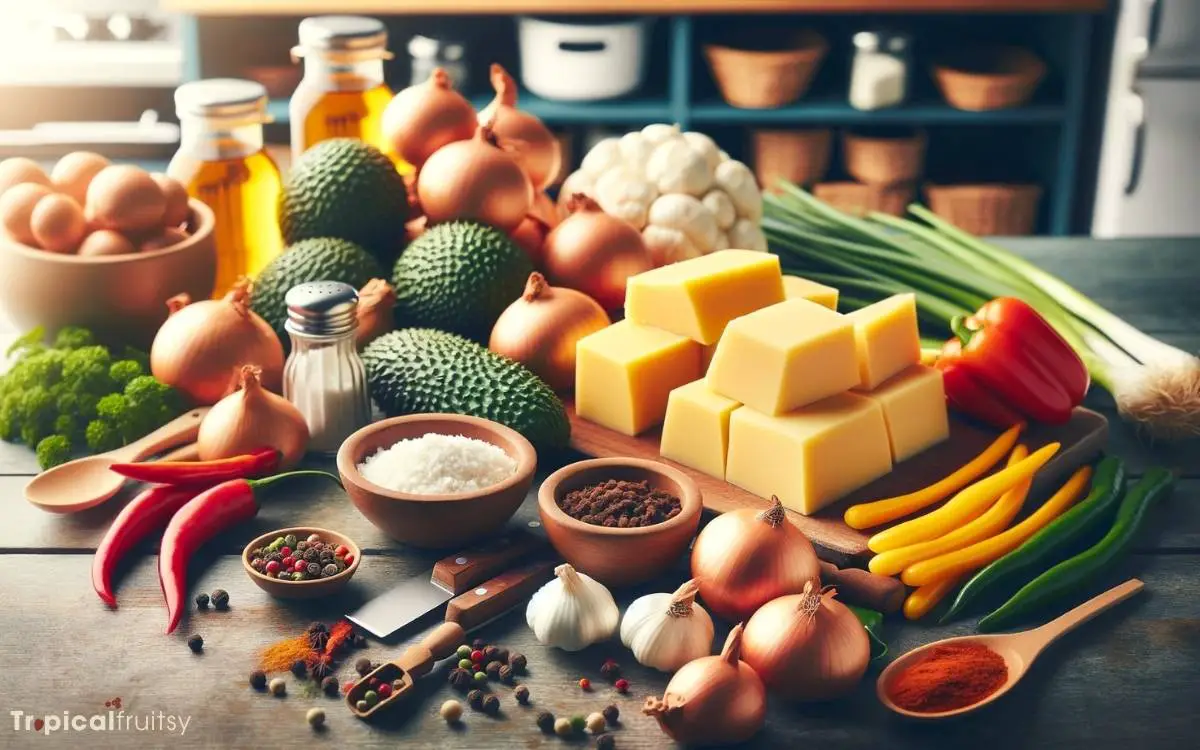
Culinary tradition dictates that the cornerstone of ackee and saltfish, Jamaica’s national dish, is the harmonious blend of its two eponymous ingredients: the creamy fruit ackee and the savory, cured saltfish.
Ackee, when cooked, presents a delicate texture and a mildly nutty flavor that seamlessly complements the robust, salty taste of saltfish—a preserved cod that has been soaked to temper its salinity.
This synthesis not only provides a unique taste profile but also reflects the historical interweaving of indigenous and colonial food practices.
| Ingredient | Description |
|---|---|
| Ackee | A tropical fruit that is native to West Africa, but has been naturalized in Jamaica. It must be properly ripened and prepared to be safe for consumption. |
| Saltfish | Traditionally cod, this fish is salt-cured and dried, requiring rehydration and desalination before use. |
| Scotch Bonnet Peppers | Known for their heat and fruity flavor, these peppers add a spicy dimension to the dish. |
| Spices & Herbs | A blend of thyme, black pepper, and allspice typically season the dish, contributing to its signature flavor. |
Analyzing these components reveals the dish’s capacity to represent a fusion of flavors, each integral to the dish’s cultural representation and culinary balance.
Step-by-Step Preparation
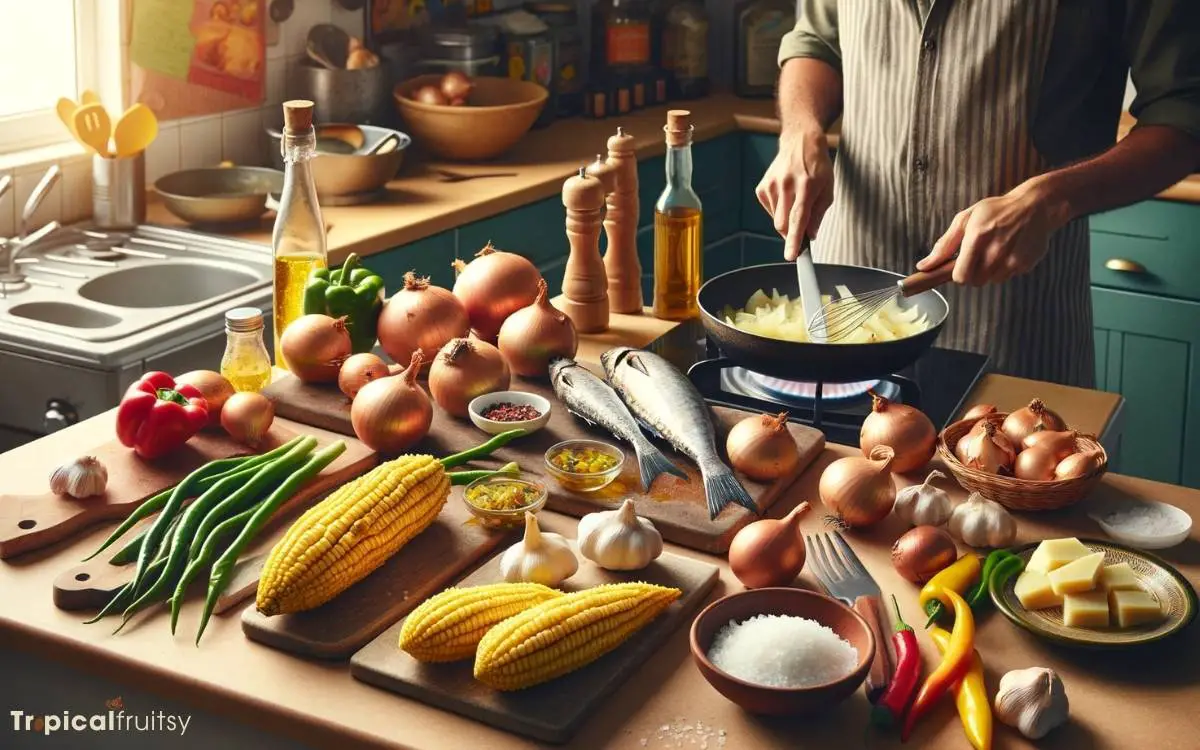
The preparation process for ackee and saltfish involves a series of meticulous steps to ensure the dish’s traditional flavor and texture are achieved.
Analyzing the methodology reveals an intricate interplay between ingredient treatment and cooking technique, each contributing to the dish’s cultural authenticity and gastronomic balance.
Desalination of the Saltfish:
- Soak saltfish overnight, changing water several times.
- Boil saltfish in fresh water to remove excess salt and to tenderize.
Preparation of the Ackee:
- If using fresh ackee, wait until the fruit’s pods open naturally.
- Boil ackee gently until soft, then drain to avoid mashing delicate fruit.
Such steps illustrate not only a respect for the ingredients’ inherent characteristics but also a recognition of the traditional methods that have been passed down through generations, ensuring the dish remains a true representation of its roots.
Traditional Serving Suggestions

Ackee and saltfish, while a dish with humble beginnings, has evolved within its cultural context to represent a significant aspect of culinary tradition in Jamaica.
The gastronomic pairing of this staple with specific side dishes not only enhances the flavor profile but also aligns with the nutritional customs of the region.
An exploration of common accompaniments such as fried dumplings, boiled green bananas, and breadfruit underscores the dish’s integration into the larger framework of Caribbean breakfast cuisine.
Common Side Dishes
Accompanying ackee and saltfish, a quintessential Jamaican dish, are a variety of side dishes that enhance its flavors and create a balanced meal.
These accoutrements are not mere afterthoughts but integral components that contribute to the dish’s nutritional and sensory profile.
Fried Dumplings (Johnny Cakes):
- Nutritional Context: Offers carbohydrates for energy.
- Sensory Contribution: Adds a contrasting texture to the soft ackee.
Boiled Green Bananas:
- Cultural Significance: Rooted in the island’s history as a staple food.
- Health Aspect: Provides essential vitamins and minerals.
Analyzing the traditional pairing, one observes how these sides are carefully selected to complement the main dish’s rich and savory notes.
The combination of flavors and textures reflects a culinary balance that is deeply embedded in Jamaican culture and cuisine.
Breakfast Pairings
Commonly consumed as a hearty breakfast, ackee and saltfish is typically paired with staples such as fried dumplings and boiled green bananas to start the day with a satisfying meal.
This combination not only provides a balance of textures and flavors but also contributes to a multifaceted nutritional profile.
The dish’s traditional accompaniments, which may also include roasted breadfruit and steamed callaloo, are reflective of Jamaica’s rich agricultural tapestry and culinary traditions.
Analyzing these pairings reveals cultural preferences for energy-dense, nutrient-rich foods that sustain the body for manual labor and daily activities.
The synthesis of these elements within the meal aligns with the broader Caribbean dietary paradigm.
Nutritional Value Breakdown

How does the traditional Jamaican dish of ackee and saltfish contribute to one’s daily nutritional requirements?
This dish, a staple in Jamaican cuisine, provides a rich tapestry of nutrients essential for maintaining a balanced diet.
Ackee, the national fruit of Jamaica, is a significant source of dietary fiber, vitamin C, and essential fatty acids. Meanwhile, saltfish, typically cod, offers high-quality protein and omega-3 fatty acids, vital for heart and brain health.
Ackee:
- Dietary Fiber: Supports digestive health.
- Vitamin C: Crucial for immune function and skin health.
- Essential fatty acids: Contribute to cardiovascular health.
Saltfish:
- Protein: Essential for muscle repair and growth.
- Omega-3 fatty acids: Reduce inflammation and support cognitive function.
In a scholarly context, this dish exemplifies a symbiotic nutritional profile, addressing diverse dietary needs through a single meal.
Ackee and Saltfish Variations
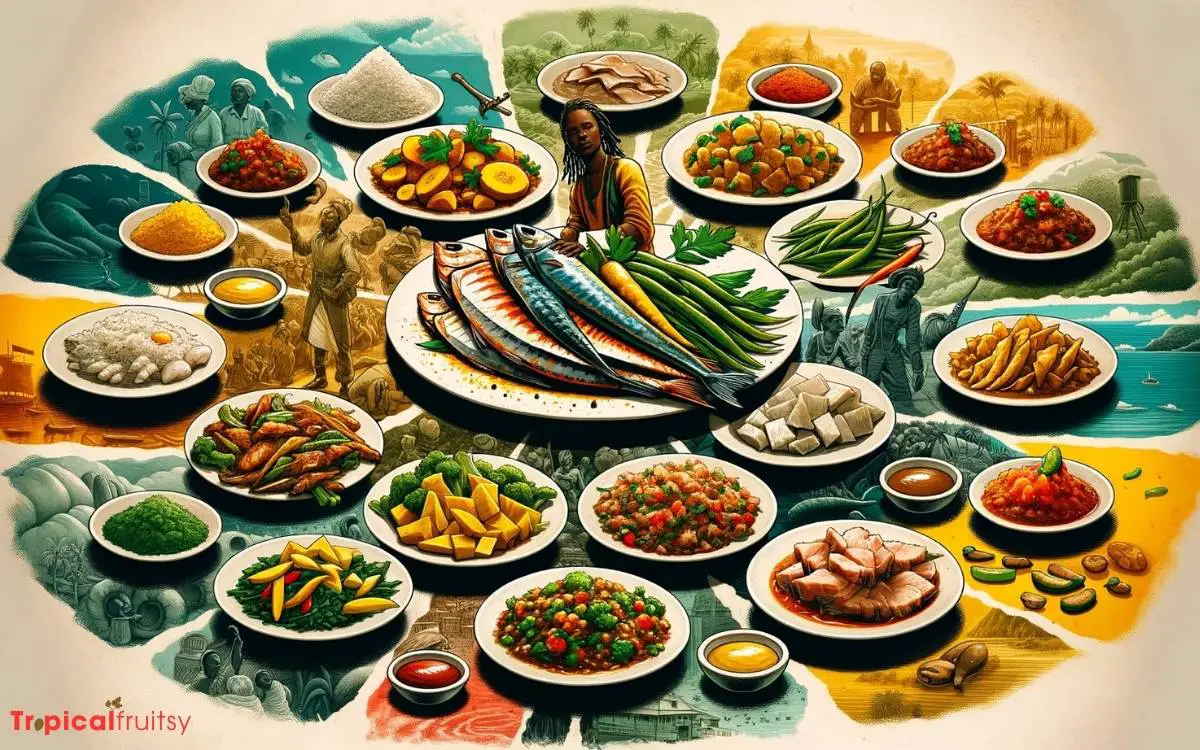
Regional cooking practices have given rise to various interpretations of ackee and saltfish, each adding unique ingredients or techniques to the traditional recipe.
This dish, deeply rooted in Jamaican culture, has traversed beyond its origins, inviting culinary experimentation that reflects local tastes and ingredient availability.
The table below delineates notable variations, showcasing the adaptive nature of this beloved Caribbean staple:
| Variation | Distinctive Elements |
|---|---|
| Rundown Style | Cooked in coconut milk for a creamy texture |
| With Breadfruit | Served with roasted breadfruit slices |
| Spicy Version | Enhanced with Scotch bonnet peppers |
| Vegetarian Twist | Replacing saltfish with tofu or vegetables |
Analyzing these derivatives underscores the flexibility inherent in traditional cuisines, affirming their capacity for evolution while maintaining foundational flavors that define the original dish.
What Are Some Traditional Jamaican Dishes That Use Ackee?
During ackee season in Jamaica, you’ll find traditional dishes like ackee and saltfish, ackee and corn pork, and ackee and breadfruit. These meals are staple dishes in Jamaican cuisine, and locals look forward to enjoying them during the abundant ackee season.
Cultural Significance in Jamaica

Within the tapestry of Jamaican heritage, ackee and saltfish stands as a national emblem, embodying the island’s rich history and culinary identity.
This dish reflects the confluence of various cultures, particularly the influence of African and European traditions in the Jamaican culinary landscape.
Historical Context:
- Originated from the Akan people of West Africa, ackee is emblematic of the African diaspora.
- The incorporation of salted cod, introduced by European colonizers, symbolizes the fusion of imported and indigenous food practices.
National Identity :
- Officially recognized as Jamaica’s national dish, it epitomizes the nation’s blend of ethnicities and narratives.
- Served across the island, it unifies Jamaicans in their shared appreciation for a dish that is uniquely their own.
In essence, ackee and saltfish is not merely sustenance but a storied plate that speaks to Jamaica’s complex past and persistent pride.
Conclusion
Ackee and saltfish stands as a culinary emblem of Jamaican culture, reflecting a synthesis of indigenous and colonial influences.
This dish not only satisfies the palate but also nourishes the body, with its rich array of vitamins and proteins.
Interestingly, despite ackee’s potential toxicity, its safe consumption is a testament to the culinary expertise inherent in Jamaican tradition.
Ackee and saltfish remains a vibrant link to Jamaica’s history, with 70% of Jamaicans considering it their national dish.




